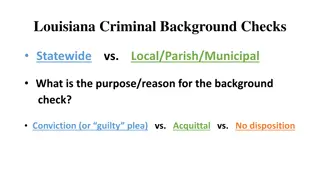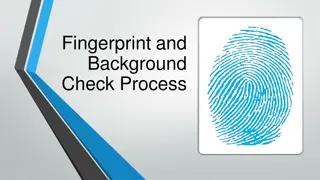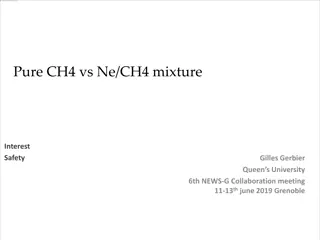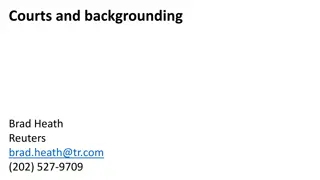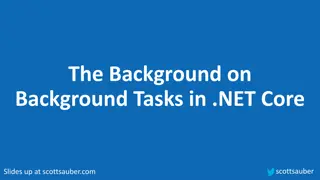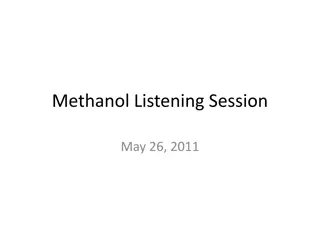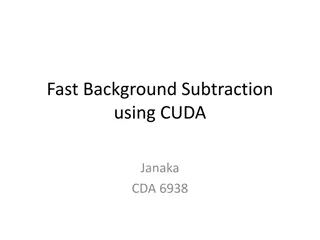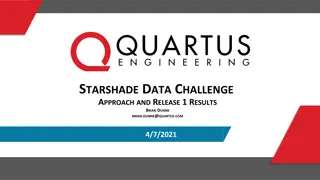
Functional MRI: Principles and AFNI Tools
Discover the principles of functional MRI and explore the tools and concepts behind AFNI for data analysis. Learn about AFNI installation, principles of tool development, and user-friendly practices. Bookmark essential resources for hands-on learning. Enhance your understanding of fMRI data analysis and customization through AFNI's powerful features.
Download Presentation

Please find below an Image/Link to download the presentation.
The content on the website is provided AS IS for your information and personal use only. It may not be sold, licensed, or shared on other websites without obtaining consent from the author. If you encounter any issues during the download, it is possible that the publisher has removed the file from their server.
You are allowed to download the files provided on this website for personal or commercial use, subject to the condition that they are used lawfully. All files are the property of their respective owners.
The content on the website is provided AS IS for your information and personal use only. It may not be sold, licensed, or shared on other websites without obtaining consent from the author.
E N D
Presentation Transcript
1 A AF FN NI I Didactics and Demonstrations Introduction, Concepts, Principles March 2020
2 Web Page to Bookmark https://afni.nimh.nih.gov/pub/dist /doc/htmldoc/index.html == https://bit.ly/AFNIstuff Links to AFNI AFNI Installation instructions, Documentation, Data, Tips, et cetera To use hands-on videos: install AFNI and then the Prep for Bootcamp link AFNI
3 A AF FN NI I = Analysis of Functional NeuroImages Created to provide an environment for FMRI data analyses AFNI AFNI refers to both the program of that name and the entire package of external programs and plugins (several hundred) Important principles in the development of AFNI: Allow user (you) to stay close to the data and view it in different ways Give users the power to assemble computing pieces in different ways to make customized analyses oWith great power comes great responsibility to understand the analyses and the tools Provide mechanism, not policy Allow other programmers to add features/components
4 Principles (and Caveats) We Live By Fix significant bugs as soon as possible But, we define significant Nothing is secret or hidden (AFNI is open source) But, possibly not very well documented or advertised Release early and often So, All users are beta-testers for life Help the user (message board; consulting with NIH users) Until our patience expires Try to anticipate users future needs What we think you need may not be what you really need
5 Before We Really Start AFNI has many programs and each has many options Assembling the programs to do something useful and good seems confusing (OK, isconfusing) when you start To help overcome this problem, we have super-scripts that carry out important tasks Each script runs multiple AFNI programs We recommend using these as the basis for FMRI work afni_proc.py= Single subject FMRI pre-processing and time series analysis for functional activation align_epi_anat.py = Image alignment (registration), including anatomical-EPI, anatomical-anatomical, EPI-EPI, and alignment to atlas space (Talairach/MNI)
6 A What is Functional MRI? 1991 discovery: MRI-measurable signal increases few % locally in brain after increases in neuronal activity (Kwong, et al.) Signal increase caused by change in H2O surroundings: more oxygenated hemoglobin is present Cartoon of MRI signal in a single activated brain voxel with no noise! D: 4-5 s rise E: 5 s plateau Contrast through time G: Return to baseline (or undershoot) A: Pre-activation baseline C: 2 s delay time B: 5 s neural activity F: 4-6 s fall
7 How FMRI Experiments Are Done Alternate subject s neural state between 2 (or more) conditions using sensory stimuli, tasks to perform, ... Can only measure relative signals, so must look for changes in the signal between the conditions Acquire lots of MR images repeatedly during this process Search for voxels whose NMR signal time series (up-and- down) matches stimulus time series pattern (on-and-off) FMRI data analysis is basically pattern matching in time MRI signal changes due to neural activity are small Need 500 or so images in time series (in each slice) takes 30 min or so to get reliable activation maps Other small effects can corrupt the results process the data to reduce these effects & be vigilant post-
8 Sample Data Time Series 64 64 matrix (TR=2.5 s; 130 time points per imaging run) Somatosensory task: 27 s on , 27 s rest Note that this is really good data pattern of expected BOLD signal pattern fitted to data data One echo-planar image One anatomical image, with voxels that match the pattern given a color overlay
9 Fundamental AFNI Concepts Basic unit of data in AFNI is the dataset A collection of 1 or more 3D arrays of numbers o Each entry in array is in a particular spatial location in a 3D grid o Image datasets: each array holds collection of slices from scanner Each number is the signal intensity for that particular voxel o Derived datasets: each number is computed from other dataset(s) e.g., each voxel value is a t-statistic reporting activation significance from an FMRI time series dataset, for that voxel Each 3D array in a dataset is called a sub-brick o There is one number in each voxel in each sub-brick (volume) Jargon! Jargon! } 3x3x3 Dataset With 4 Sub-bricks
10 Dataset Cartoon: A Little Bit Bigger sub-brick = one 3D volume inside a multi-volume dataset
11 What's in a Dataset: Header Stuff Besides the voxel numerical values, a dataset also contains auxiliary information, including (some of which is optional): xyz dimensions of each voxel (in mm) Orientation of dataset axes; for example, x-axis=R-L, y-axis=A-P, z-axis=I-S = axial slices (we call this orientation RAI ) Location of dataset in scanner coordinates o Needed to overlay one dataset onto another o Important to get right in FMRI, since we deal with many datasets Time (s) between sub-bricks, for 3D+time datasets o Such datasets are basic unit of FMRI data (one per imaging run) Statistical parameters associated with each sub-brick o e.g., a t-statistic sub-brick has degrees-of-freedom parameter stored Jargon!
12 AFNI Formatted Dataset Files - 1 AFNI formatted datasets are stored in 2 files The .HEAD file holds all the auxiliary information (ASCII) The .BRIK file holds all the numbers in all the sub-bricks Datasets can be in one of 2 coordinate systems ( views ) Original data or +orig view = from the scanner Talairach or +tlrc view = oDataset has been rescaled to conform to the Talairach- Tournoux atlas dimensions or another atlas, such as MNI oAKA Stererotaxic coordinates o All datasets scaled+aligned to some atlas are labeled +tlrc Header file holds name of actual atlas space (e.g., MNI ) Alignment can be linear or nonlinear (3dQwarp program) AFNI
13 AFNI Formatted Dataset Files - 2 AFNI dataset filenames consist of 3 parts The user-selected prefix (almost anything) The view (one of +orig, or +tlrc) The suffix (one of .HEAD or .BRIK) TonyFauci_epi+tlrc.HEAD & TonyFauci_epi+tlrc.BRIK You supply the prefix; the AFNI program supplies the rest AFNI programs can read datasets stored in several formats ANALYZE (.hdr/.img file pairs); very old nowadays MINC-1 (.mnc); i.e., from mnitools (also very old now) CTF (.mri, .svl) MEG analysis volumes ASCII text (.1D) text numbers arranged into columns Have conversion programs to write out MINC-1, ANALYZE, ASCII, and NIfTI-1.1 files, if desired Jargon!
14 NIfTI Dataset Files NIfTI-1 (.nii or .nii.gz) is a standard format that AFNI, SPM, FSL, FreeSurfer, BrainVoyager, et al., agreed upon Goal: easier interoperability of tools from various packages All data is stored in one file (cf. http://nifti.nimh.nih.gov/) 352 byte header (extensions allowed; AFNI Followed by the image binary numerical values Allows 1D 5D datasets of diverse numerical types .nii.gz suffix means file is compressed (using Unix program gzip) AFNI reads and writes NIfTI-1 (and NIfTI-2) datasets To write: when you give the prefix for the output filename, end it in .nii or .nii.gz , and AFNI programs will automatically write NIfTI-1.1 format instead of .HEAD/.BRIK To read: just give the full filename ending in .nii or .nii.gz AFNI uses this feature)
15 Creating Datasets from DICOM Files Program 1: Rick Reynolds AFNI program Dimon Was originally created for sending image data directly into AFNIfor realtime FMRI Program 2: Chris Rorden sdcm2niix_afni Can create a whole collection of datasets Works with more DICOM formats than Dimon does Problem: Standard NIFTI .nii format can t store complicated slice timings So programs like dcm2niix_afni cannot store this information even if the program can find it in the DICOM files Solution: use 3drefit to add the slice timing information to the header (inside AFNI extension for NIFTI .nii files)
16 Dataset Directories Datasets are stored in directories (AKA folders ) All the datasets in the same directory, in the same view, are presumed to be aligned in xyz-coordinates o Voxels with same value of (x,y,z) correspond to same brain location Can overlay (in color) any one dataset on top of any other one dataset (underlay in grayscale) from same directory o Even if voxel sizes and spatial orientations differ o Overlay of one dataset upon another is based on xyz coordinates Typical AFNI contents of a directory are all data derived from a single scanning session for one subject o Anatomical reference (T1-weighted SPGR or MP-RAGE volume) o 10-20 3D+time datasets from FMRI EPI functional runs o Statistical datasets computed from 3D+time datasets o Datasets transformed from +orig to +tlrc coordinates
17 Getting and Installing AFNI AFNI runs on Unix systems: Linux, Sun, Mac OS X Can also run under Windows Subsystem for Linux o Requires also installing X11 (Unix graphics display software) You can download precompiled binaries from our Website https://afni.nimh.nih.gov/pub/dist/doc/htmldoc/index.html Documentation, message board, data, class materials, You can download source code and compile it And from GitHub: https://github.com/afni/AFNI AFNI is updated fairly frequently, so it is important to update occasionally =@update.afni.binaries It s hard to help you with outdated versions! Please check for updates every 6 months (or less)
18 SUMA, et alii SUMA is the AFNI surface mapper For displaying surface models of cortex o Surfaces from FreeSurfer (MGH) et cetera Interactively display functional activations mapped from 3D volumes to the cortical surface representation Draw ROIs directly on the cortical surface o vs. AFNI: ROIs are drawn into the 3D volume SUMA is separate from AFNI, but can talk with AFNI Click in AFNI or SUMA to change focus point, and the other program jumps to that location at the same time Functional (color) overlay in AFNI can be sent to SUMA for simultaneous display And much more stayed tuned for the SUMA talks to come!
19 That s All for Now






